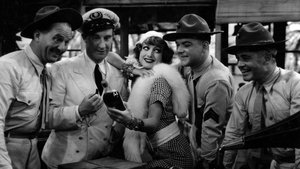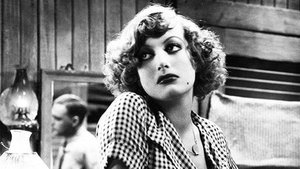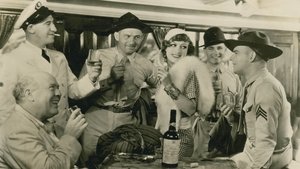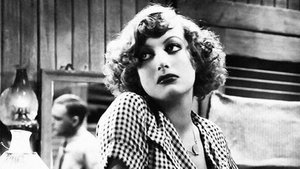Video Sources 0 Views
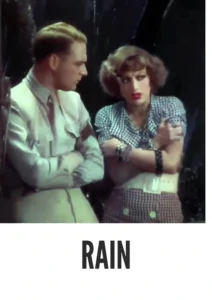
Download Rain (1932) Colorized HD | Joan Crawford | Steamy Pre-Code Drama
Synopsis
Lust in the Tropics: Rain (1932) in Vivid Color

Immerse yourself in the torrid world of Rain, a steamy pre-code drama from 1932, now beautifully colorized for a viewing experience like never before. Starring Joan Crawford and Walter Huston, this film delivers a powerful exploration of morality, desire, and human frailty amidst a tropical storm. Perfect for fans of classic cinema and bold storytelling, this HD download brings a controversial and compelling piece of cinematic history to your screen.
Rain Storyline: A Clash of Wills on a Tropical Island
Rain tells the story of Sadie Thompson (Joan Crawford), a free-spirited and alluring woman stranded on a remote island in the South Pacific due to a quarantine. There, she encounters Alfred Davidson (Walter Huston), a self-righteous missionary determined to reform her sinful ways.As the relentless rain falls, tensions rise between Sadie and Davidson. He sees her as a challenge to his moral authority, while she resists his attempts to control her. Their conflict escalates into a battle of wills, exposing the hypocrisy and repressed desires beneath Davidson’s religious fervor. The film culminates in a dramatic and tragic confrontation, revealing the destructive consequences of obsession and judgment. Ultimately, Rain is a thought-provoking and emotionally charged drama that explores the complexities of human nature and the hypocrisy of religious extremism.
Movie Cast
The film boasts powerful performances from its lead actors:
- Joan Crawford as Sadie Thompson
- Walter Huston as Alfred Davidson
- Guy Kibbee as Joe Horn
- William Gargan as Sergeant O’Hara
- Beulah Bondi as Mrs. Davidson
Movie Genre
Rain is a pre-code drama that delves into themes of morality, sexuality, and religious hypocrisy. Its bold and controversial subject matter reflects the pre-code era of Hollywood, when filmmakers enjoyed greater freedom to explore taboo subjects.
Historical Context: Pre-Code Hollywood and Censorship
Released in 1932, Rain exemplifies the daring and boundary-pushing nature of pre-code Hollywood. This period was characterized by a more permissive approach to filmmaking, allowing for the exploration of mature themes and controversial subject matter. However, the film faced censorship challenges due to its explicit content and portrayal of religious figures. As a result, Rain became a significant film in the history of censorship in American cinema.
Colorization Details
This colorized version of Rain has been carefully restored using state-of-the-art digital techniques, enhancing the visual impact while preserving the film’s original atmosphere of tropical heat and moral tension. The colorization process involved meticulous analysis of the original black and white footage, with careful attention to skin tones, costumes, and the lush landscapes of the South Pacific island setting. The goal was to create a visually stunning experience that enhances the emotional impact of the story.
Technical Details
- Director: Lewis Milestone
- Screenplay: Maxwell Anderson
- Based on: the play Rain by John Colton and Clemence Randolph, and the short story “Miss Thompson” by W. Somerset Maugham
- Cinematography: Oliver T. Marsh
- Edited by: Frank Ware
- Production Company: United Artists
- Distributed by: United Artists
- Runtime: 94 minutes
Technical Specifications
- Download Format: MP4
- Resolution: HD (1080p)
- Compatibility: Compatible with most devices, including smartphones, tablets, computers, and smart TVs.
Reviews and Critical Reception
Rain (1932) is a controversial and compelling film that showcases Joan Crawford’s star power and Walter Huston’s intense performance. While it has faced criticism for its heavy-handedness and melodramatic elements, it remains a significant example of pre-code cinema and a powerful exploration of human nature. As a provocative and visually striking film, Rain continues to spark debate and captivate audiences.
FAQs
- Q: What is Rain about?
- A: Rain is a drama about a clash of wills between a free-spirited woman and a zealous missionary on a tropical island.
- Q: Why is Rain considered controversial?
- A: Rain deals with mature themes such as sexuality, religious hypocrisy, and moral corruption, which were considered taboo at the time of its release.
- Q: Is this version of Rain colorized?
- A: Yes, this version has been professionally colorized to enhance the viewing experience.
- Q: What makes Rain interesting for classic film fans?
- A: Rain offers a glimpse into the pre-code era of Hollywood, when filmmakers enjoyed greater freedom to explore controversial subject matter.
- Q: What is the download format?
- A: The download format is MP4, which is compatible with most devices.
- Q: What resolution is the download?
- A: The resolution is HD (1080p), providing a high-quality viewing experience.
Download Now in HD!
Watch Rain Today!
